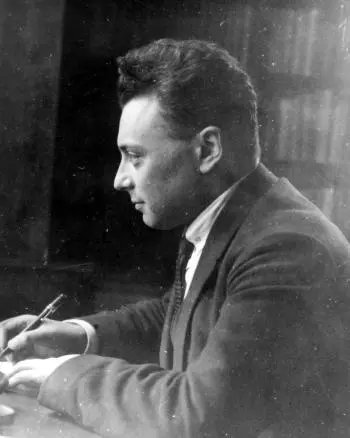
Quantum physics, a fascinating branch of physics that describes the behavior of subatomic particles, has given us numerous fundamental principles that govern the microscopic world.
Among these principles, the "Pauli Exclusion Principle" stands out, proposed by the Austro-Hungarian physicist Wolfgang Pauli in 1925. This principle is essential for understanding the structure of atoms and plays a crucial role in the formation of the periodic table of the elements. .
The theoretical basis of exclusion
The Pauli exclusion principle is rooted in the dual nature of subatomic particles, such as electrons, protons, and neutrons, which exhibit both particle and wave properties.
Pauli formulated his principle to address an anomaly observed in atomic spectra and to coherently explain the arrangement of electrons in atoms.
Fermions and the essence of the beginning
The Pauli exclusion principle applies specifically to particles known as fermions, which include electrons, protons, and neutrons.
Fermions are particles with semi-integer spin, which means that their intrinsic spin can take values such as 1/2, -1/2, 3/2, etc. Spin is a quantum property that contributes to the unique identity of each particle.
Ban on quantum superposition
The heart of the Pauli exclusion principle is the prohibition of quantum superposition. This prohibition states that two identical fermions cannot simultaneously occupy the same quantum state in a given system.
Quantum states are defined by various quantum numbers, such as spin, energy, and angular momentum. In simpler terms, two electrons in an atom cannot have all of their quantum numbers identical.
Effects on atomic structure
This principle has profound implications for the structure of atoms. When electrons are added to an atom, they must occupy specific energy levels and sublevels.
The arrangement of these electrons determines the chemical properties of the atom and, ultimately, its position on the periodic table.
The periodic table organizes elements based on their chemical and physical properties, and the Pauli exclusion principle contributes directly to this organization by dictating how electrons are distributed in different atomic orbitals.
Impact on the evolution of atomic models
The Pauli exclusion principle has had a significant impact on atomic theory as it relates to the evolution of atomic models, transforming our understanding of atomic structure.
Before its formulation, Bohr's model provided a simplified, but incomplete, representation of atoms. However, with the introduction of the Pauli exclusion principle, the quantum model emerged as a more accurate description.

Some of the most relevant models that take this principle into account are:
- Quantum model: This model is the most fundamental and complete that incorporates the Pauli Exclusion Principle. Developed in the first half of the 20th century, especially by Schrödinger and Heisenberg, it uses quantum mechanics to describe the likely location of electrons in terms of orbitals and energy levels.
- Orbital model: Based on quantum mechanics, the orbital model takes this principle into account by describing the distribution of electrons in terms of atomic orbitals. Orbitals are high probability regions where an electron is expected to be found, and the constraint imposed by Pauli ensures that two electrons in an orbital have opposite spins.
- Sommerfeld Model: This model, an extension of the Bohr model, includes the idea of energy levels and elliptical orbits, but is still a semiclassical model. Although it does not fully describe the complexity of the electronic distribution, Sommerfeld's atomic model indirectly recognizes the need for additional rules, such as those established by the Pauli exclusion principle.
Implications in chemistry and physics of materials
The Pauli exclusion principle is not only fundamental to the understanding of atomic structure, but also has practical applications in fields such as chemistry and materials physics.
The formation of chemical bonds, electrical conductivity, and other material properties are intrinsically linked to the distribution of electrons in atoms, a distribution that follows the rules established by the exclusion principle.
Experimental confirmation and further developments
The Pauli exclusion principle has stood the test of time through numerous experiments and observations in the quantum world. Spectroscopy and other experimental techniques have confirmed the validity of this principle, providing a solid foundation for quantum theory.
Furthermore, the Pauli exclusion principle has led to later developments in quantum theory, such as Fermi-Dirac statistics, which describes the distribution of fermions in quantum systems at finite temperatures.
Conclusion: a pillar of quantum physics
In summary, the Pauli exclusion principle is a fundamental pillar of quantum physics that provides a deep understanding of atomic structure and the formation of the periodic table.
This principle, which prohibits the quantum superposition of identical fermions, establishes the rules for the distribution of electrons in atoms, directly affecting the chemical and physical properties of matter. Its experimental confirmation and practical applications highlight the enduring importance of this principle in our understanding of the subatomic world.